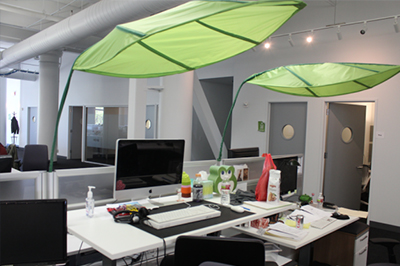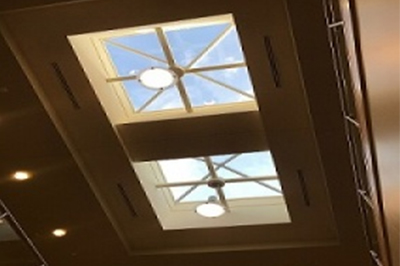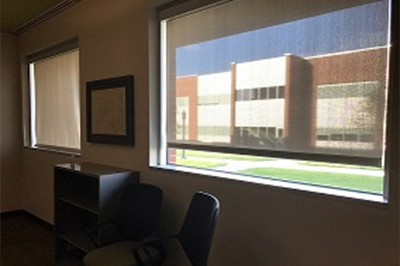Lighting Control System (Thermal Comfort)
Lighting Control System (Thermal Comfort)
Blocking Elements (TC.BE)
Elements which block direct daylight/sunlight in the room, not including shading devices (louver, baffle, and shades).
From the supporting literature (linked above), these are interior and or exterior elements that block penetration of light in a classroom. Space configuration in the classroom could block light from penetration. Shrubs, trees, hills, rocks, buildings and other structures, and objects also block light penetration from the outside.
Skylight
Daylighting orientating from the roof affecting room temperature.
From the supporting literature (linked), it is important to provide daylight in a classroom through skylights for an improved students performance and well-being. Lights provided through skylights in the building affects classroom temperature and lighting. It also adds to classroom aesthetic view. There is a strong relationship between classroom lighting and thermal comfort.
Recommendations
1. Reduce classroom energy consumption by providing skylights.
2. Optimize natural lighting in classroom design by providing skylights.
Shading Devices (SD)
Physical elements (interior or exterior) that control direct daylight/ sunlight affecting room temperature.
From the supporting literature (linked above), these are interior and or exterior elements intentionally put in place to block penetration of light in a classroom. Some of these elements that interiorly blocks light are blinds/shades, adjustable louvers, and light shelves. Vertical fins, glass, and overhangs are some elements that can block light from the exterior.
Glass and Window System (TC.GWS)
Window glass system is doubled paned systems.
From the supporting literature (linked above), the type of window system in place affects the thermal comfort of a classroom. Some common window systems include but not limited to; double panel windows, casement windows, bay windows, picture windows, and slider windows.
References
1. Tanner, C. K (2009) Effects of school design on student outcomes. Education Administration, 47(3), 381-399.
2. Blincoe, J.M (2008) The Age and Condition of Texas High Schools as Related to Student Academic Achievement. College of Education, University of Texas at Austin.
3. Heschong L. (1999). “Daylighting in Schools: An Investigation into the Relationship Between Daylighting and Human Performance (HMG Project #9803)”. Heschong Mahone Group to Pacific Gas and Electric Company on behalf of the California Board for Energy Efficiency Third Party Program. http://files.eric.ed.gov/fulltext/ED444337.pdf (May 16, 2016).
4. Lewis, L; Snow, K; Farris, E; Smerdon, B; Cronen, S; Kaplan, J; Greene, B (2000)] Condition of America’s Public School Facilities: 1999 (NCES 2000-032). National Center for Education Statistics U.S. Department of Education, Washington D.C.
5. Pereira, L. D., Raimondo, D., Corgnati, S. P., & da Silva, M. G. (2014). Assessment of indoor air quality and thermal comfort in Portuguese secondary classrooms: methodology and results. Building and environment, 81, 69-80.
6. Tanner, C. K. (2000). “The influence of school architecture on academic achievement.” Journal of Educational Administration, 38(4), 309-330.
7. Tanner, C. K. (2009). Effects of school design on student outcomes. Journal of Educational Administration, 47(3), 381-399.








